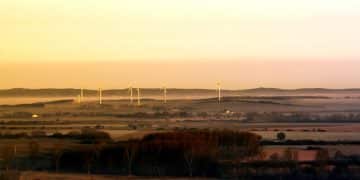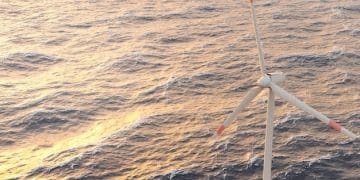The Future of US Wind Power: Taller Turbines & Offshore Farms Boost Energy
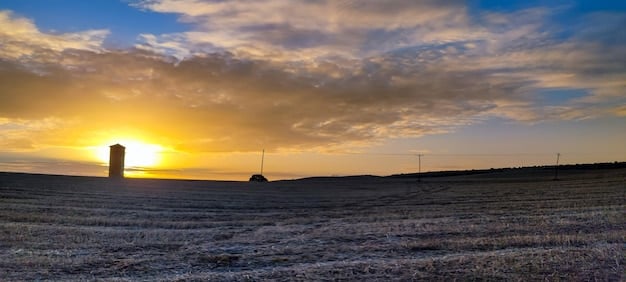
The future of US wind power is being reshaped by taller turbines and offshore wind farms, which are significantly boosting energy production by an estimated 20%, enhancing efficiency and tapping into previously inaccessible wind resources.
The landscape of energy production in the United States is undergoing a significant transformation, and at the forefront of this change is the evolution of wind power. The Future of US Wind Power: How Taller Turbines and Offshore Farms Are Boosting Energy Production by 20% is not just a headline; it’s a tangible reality that promises cleaner, more efficient energy for generations to come.
The Rise of Taller Turbines
One of the most impactful advancements in wind energy technology is the development and deployment of taller turbines. These towering structures are not just about size; they represent a strategic move to harness stronger and more consistent wind resources.
Advantages of Height
Taller turbines have several key advantages over their shorter counterparts. Perhaps the most significant is their ability to reach higher altitudes where wind speeds are significantly greater.
- Increased Energy Capture: Higher wind speeds translate directly into greater energy capture, boosting the overall efficiency of the turbine.
- Consistent Wind Flow: At higher altitudes, wind flow is less turbulent and more consistent, leading to more predictable energy generation.
- Reduced Wear and Tear: The smoother wind flow also reduces stress on the turbine components, potentially extending their lifespan and reducing maintenance costs.
In conclusion, the shift towards taller turbines represents a major leap forward for the wind energy industry, unlocking new potential for energy generation and contributing to a more sustainable energy future.
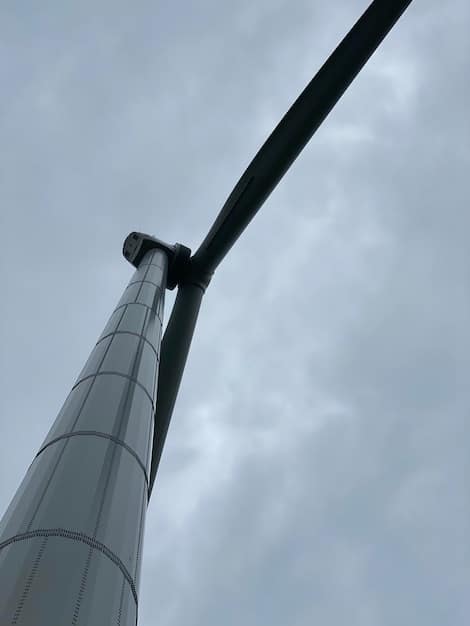
Offshore Wind Farms: Untapped Potential
While onshore wind farms have become increasingly common across the United States, the real game-changer lies in the vast, untapped potential of offshore wind. These massive projects are poised to revolutionize the energy landscape.
Harnessing Coastal Winds
Offshore wind farms capitalize on the strong and consistent winds found off the coasts. These winds are often stronger and more reliable than those found inland, offering a significant advantage for energy production.
- Higher Wind Speeds: Coastal areas typically experience higher average wind speeds, leading to greater energy generation.
- Reduced Visual Impact: Offshore wind farms are located far enough from the coast to minimize visual impact on communities.
- Vast Untapped Resource: The potential for offshore wind energy is enormous, with vast areas of coastline suitable for development.
Offshore wind farms represent a significant opportunity to diversify the US energy portfolio, reduce reliance on fossil fuels, and create a more sustainable energy future. The investment in these projects is an investment in the future of clean energy.
Policy and Investment Driving Growth
The growth of wind power in the United States is not solely driven by technological advancements. Supportive policies and strategic investments play a crucial role in fostering innovation and accelerating deployment.
Federal and State Initiatives
Government initiatives at both the federal and state levels are providing crucial support for the wind energy industry. These policies range from tax incentives to renewable energy mandates.
- Tax Credits: Federal tax credits encourage investment in wind energy projects, making them more financially attractive to developers.
- Renewable Energy Standards: State-level renewable energy standards require utilities to generate a certain percentage of their electricity from renewable sources, driving demand for wind power.
- Research and Development Funding: Government funding for research and development helps to advance wind energy technology and reduce costs.
These policies are essential for creating a stable and predictable market for wind energy, encouraging innovation, and attracting investment. Without these policies, the growth of the wind industry would be significantly slower.
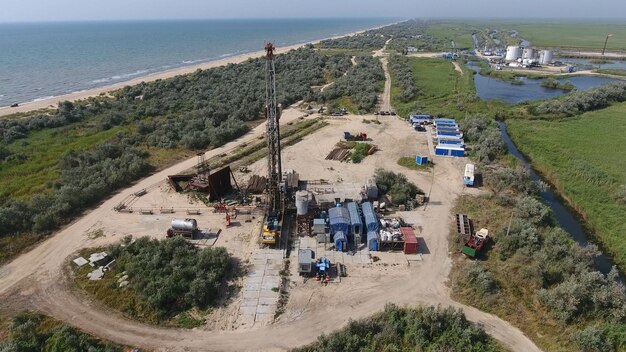
Technological Innovations Beyond Size
While taller turbines and offshore farms capture much of the attention, a range of other technological innovations are contributing to the advancement of wind power. These innovations are focused on improving efficiency, reducing costs, and increasing reliability.
Advanced Materials and Design
New materials and advanced design techniques are allowing for the creation of more efficient and durable wind turbines. These advancements are essential for maximizing energy capture and minimizing maintenance costs.
Advanced blade designs, more durable materials, and improved control systems are all contributing to the increased efficiency and reliability of wind turbines. These innovations are crucial for making wind power a cost-competitive and reliable source of energy.
Challenges and Obstacles
Despite the promising outlook for wind power in the United States, several challenges and obstacles must be addressed to ensure its continued growth and success. These challenges range from grid infrastructure limitations to environmental concerns.
Grid Infrastructure Limitations
One of the most significant challenges is the limitation of the existing grid infrastructure. The current grid is not always equipped to handle the influx of electricity generated by wind farms, particularly in remote areas.
Upgrading the grid infrastructure is a costly and time-consuming process, but it is essential for unlocking the full potential of wind power. Without adequate transmission capacity, wind energy projects may be forced to curtail production, reducing their economic viability.
The Economic and Environmental Benefits
The expansion of wind power in the United States offers a range of economic and environmental benefits. These benefits extend beyond the direct generation of electricity and include job creation, reduced carbon emissions, and improved air quality.
Job Creation
The wind energy industry is a significant source of job creation in the United States. From manufacturing and construction to operation and maintenance, wind power projects generate employment opportunities across a wide range of skill levels.
The growth of the wind energy industry is creating new jobs in rural communities, providing economic opportunities in areas that have been traditionally underserved. These jobs are helping to revitalize local economies and create a more sustainable future.
| Key Point | Brief Description |
|---|---|
| ⬆️ Taller Turbines | Increase energy capture and efficiency by reaching higher wind speeds. |
| 🌊 Offshore Farms | Harness strong and consistent coastal winds for greater energy production. |
| 💰 Policy & Investment | Federal and state initiatives drive growth through tax credits and mandates. |
| 🛠️ Tech Innovations | Advanced materials and designs improve turbine efficiency and durability. |
FAQ
Taller wind turbines can access stronger and more consistent wind flows at higher altitudes, leading to increased energy capture and efficiency.
Offshore wind farms harness stronger and more consistent coastal winds, providing higher energy output and reducing visual impact on communities.
Government policies like tax credits and renewable energy standards incentivize investment in and demand for wind energy projects.
Challenges include grid infrastructure limitations, environmental concerns, and the need for cost-effective energy storage solutions.
Wind power creates jobs in manufacturing, construction, and maintenance, and it helps revitalize local economies in rural communities.
Conclusion
The future of US wind power is exceptionally promising, driven by advancements in turbine technology, the strategic deployment of offshore wind farms, and supportive government policies. While challenges remain, the economic and environmental benefits of wind power make it a critical component of a sustainable energy future for the United States.



